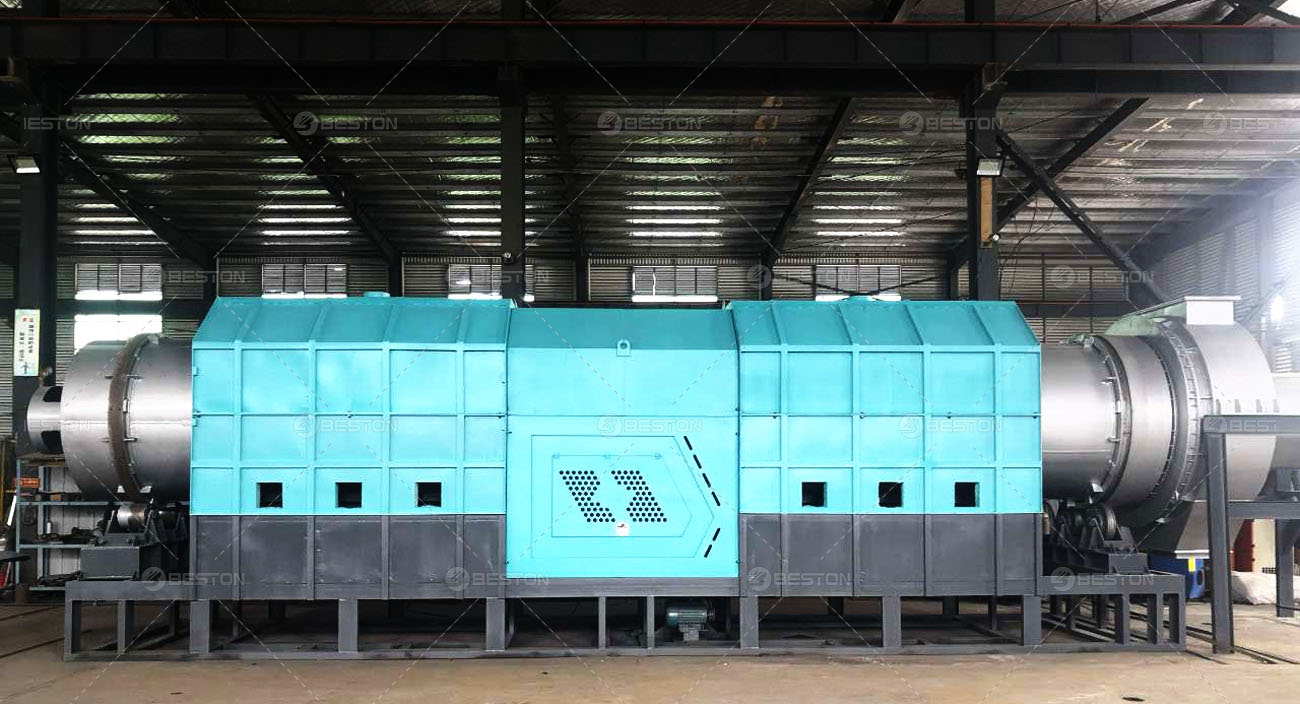The increasing focus on sustainable agricultural practices and waste management has brought biochar production to the forefront. Biochar production equipment plays a crucial role in this process, converting biomass into biochar, a carbon-rich material beneficial for soil health and carbon sequestration. This article delves into the life cycle assessment (LCA) of biochar production equipment, evaluating its environmental impacts from cradle to grave. Key phases in the LCA include raw material extraction, manufacturing, operation, and end-of-life disposal or recycling.

Raw Material Extraction
The biochar production equipment is composed of various materials, including metals, plastics, and ceramics. The extraction and processing of these raw materials are the first stages in the life cycle. Metals such as steel and aluminum are commonly used in constructing the reactor and ancillary components. The extraction of these metals involves mining activities, which can have significant environmental impacts, including habitat destruction, soil erosion, and water pollution.
Environmental Impacts
- Energy Consumption: Mining and refining metals require substantial energy, often derived from fossil fuels, contributing to greenhouse gas emissions.
- Water Usage: The extraction process consumes large volumes of water, potentially leading to water scarcity and affecting local ecosystems.
- Waste Generation: Mining generates waste materials, including tailings and slag, which can pose environmental hazards if not managed properly.
Manufacturing
The manufacturing phase involves the fabrication of biochar production equipment components and their assembly. This phase encompasses various processes such as cutting, welding, machining, and coating. The energy and material inputs for these processes significantly influence the environmental footprint of the equipment.
Environmental Impacts
- Emissions: Manufacturing activities emit pollutants, including volatile organic compounds (VOCs), particulate matter, and carbon dioxide, affecting air quality and contributing to climate change.
- Resource Depletion: The production of components consumes raw materials, contributing to resource depletion and environmental degradation.
- Waste and By-products: Manufacturing processes generate waste materials, including metal scraps, chemical residues, and packaging materials, requiring proper disposal or recycling.
Operation
The operational phase is where the biomass pyrolysis machine is actively used to convert biomass into biochar. This phase includes feedstock preparation, pyrolysis, and product recovery. The efficiency and environmental performance of the equipment during this phase are critical in determining the overall sustainability of biochar production.
Environmental Impacts
- Energy Use: The pyrolysis process requires heat, typically generated through the combustion of biomass or fossil fuels, affecting the carbon footprint of the operation.
- Emissions: Pyrolysis can release gases such as carbon monoxide, methane, and particulate matter, necessitating the use of emission control systems.
- Resource Efficiency: The type and moisture content of the biomass feedstock influence the yield and quality of biochar, impacting resource efficiency and sustainability.
End-of-Life Disposal or Recycling
The final phase in the life cycle of biochar production equipment involves its disposal or recycling. Equipment can be decommissioned due to obsolescence, wear and tear, or technological advancements. Proper disposal or recycling of the components minimizes environmental impacts and recovers valuable materials.
Environmental Impacts
- Recycling: Recycling metals and other materials reduces the need for virgin raw materials, conserving natural resources and reducing environmental degradation.
- Waste Management: Improper disposal of equipment can lead to environmental contamination, highlighting the importance of following regulations and best practices for waste management.
- Energy Recovery: Some components of the equipment, particularly those made from biomass-derived materials, can be used for energy recovery through combustion or gasification.
Mitigation Strategies
To minimize the environmental impacts associated with the life cycle of biochar pyrolysis equipment, several mitigation strategies can be implemented across different phases.

Sustainable Material Sourcing
- Recycled Materials: Using recycled metals and plastics in the manufacturing of equipment components reduces the demand for virgin raw materials and lowers the environmental footprint.
- Sustainable Mining Practices: Adopting sustainable mining practices, including reclamation and restoration, helps mitigate the environmental impacts of raw material extraction.
Energy Efficiency
- Energy-efficient Manufacturing: Implementing energy-efficient manufacturing processes and using renewable energy sources can significantly reduce emissions and energy consumption.
- Operational Efficiency: Designing equipment for optimal energy efficiency during operation, including using advanced insulation and heat recovery systems, minimizes energy use and emissions.
Emission Control
- Emission Reduction Technologies: Incorporating advanced emission control technologies, such as scrubbers and filters, reduces the release of harmful pollutants during manufacturing and operation.
- Regulatory Compliance: Adhering to environmental regulations and standards ensures that emissions are controlled and managed effectively.
End-of-Life Management
- Recycling Programs: Establishing recycling programs for decommissioned equipment components facilitates the recovery of valuable materials and reduces waste.
- Safe Disposal Practices: Implementing safe disposal practices for non-recyclable components minimizes environmental contamination and aligns with regulatory requirements.
Conclusion
The life cycle assessment of biochar production equipment provides a comprehensive understanding of its environmental impacts from raw material extraction to end-of-life disposal. By identifying and addressing these impacts through sustainable practices, energy efficiency, emission control, and effective end-of-life management, the overall sustainability of biochar production can be enhanced. Professional manufacturers can provide complete evaluation materials and professional equipment support. Beston Company is an excellent choice. Investment in advanced biochar production equipment and adherence to best practices ensure that this technology contributes positively to environmental sustainability and resource conservation.